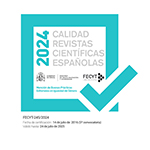On the Digital Frontier. Didactics of Literature and Video Games in the Approach to "Remember Me" and "Life is Strange"
Abstract
Based on a critical conception of the didactics of literature (Bombini, 2013; Gerbaudo, 2011a, 2011b), this paper proposes an exercise in reading comprehension of the video game as a text for reading in the classroom. This is enabled by the set of relationships, sending (Gerbaudo) or connections (Colomer, 2005) that can be established with other cultural texts, which highlights the specificity of the meaning construction process that characterises the video game as a digital artifact (Aarseth, 1997; Bogost, 2010; Juul 2013; Murray, 1999). This paper first deals with the relationship between the didactics of literature and reading at school, introducing as a variable the transformative impact of digital culture on reading texts, as well as on the modes and scope of the practice of reading. In order to do this, we consider the semiotic, rhetorical, and reception-participation conditions enabled by the video game. Then, two games by the French studio Dontnod, Remember Me (2013) and Life is Strange (2015), are taken as examples for which a set of proposals for a didactic approach is presented. These examples seek to demonstrate the way in which specific skills and reading competence can be developed in schools in relation to the connections between texts in a cultural system (Baricco, 2008; Gerbaudo, 2001a; Lotman, 1996). In short, our work is an invitation to think of the video game as a complex text, capable of enhancing reading processes through its functioning and its ability to generate relationships with other texts.
Downloads
Article download
License
In order to support the global exchange of knowledge, the journal Didáctica. Lengua y Literatura is allowing unrestricted access to its content as from its publication in this electronic edition, and as such it is an open-access journal. The originals published in this journal are the property of the Complutense University of Madrid and any reproduction thereof in full or in part must cite the source. All content is distributed under a Creative Commons Attribution 4.0 use and distribution licence (CC BY 4.0). This circumstance must be expressly stated in these terms where necessary. You can view the summary and the complete legal text of the licence.










